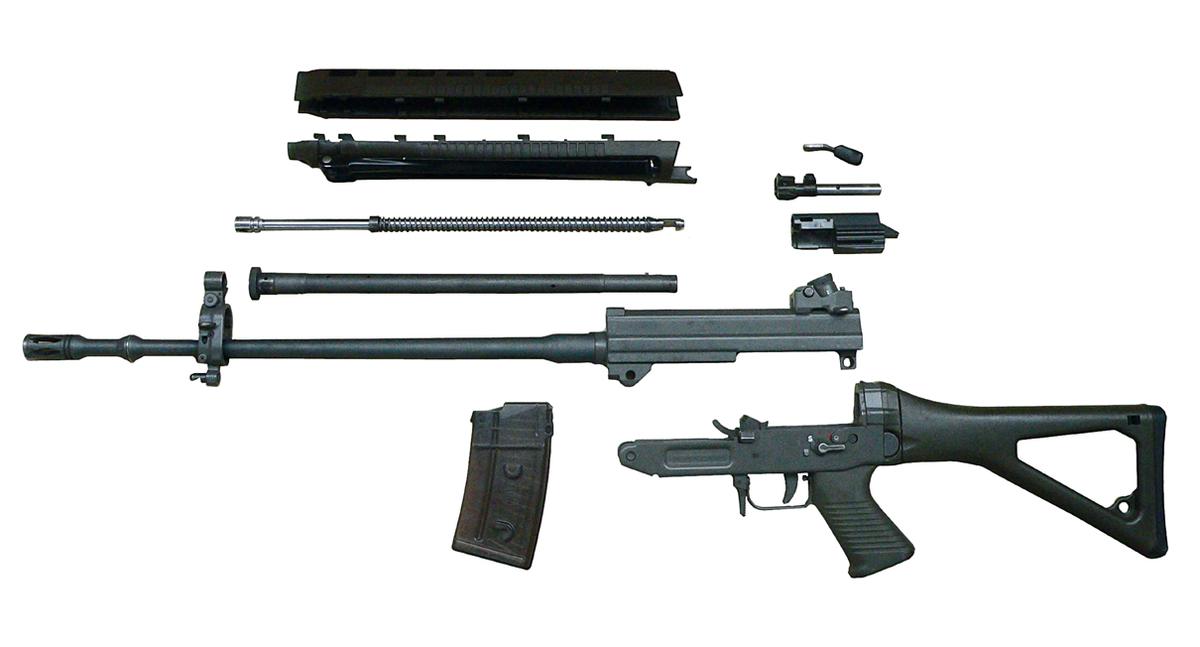It’s going to be a long year. Two sets of elections means we’re going to have to put our guns on ice for roughly the rest of 2016. This is enough to send shivers down the spine of any a gun-loving individual, and for many legitimate reasons, though that’s for a whole other discussion. For now, let’s take a quick look at what needs doing in order to make sure our guns are happy and healthy after their long nap.
Clean and lubricate. Thoroughly.

This is something many of us fail to do well on a good day. Shooting gets all kinds of dirt and gunk into all the little nooks and crannies of our guns, and it’s not the best stuff to leave in there. Take it apart as far into the disassembly procedure as you’re confident, and really get that spa action going. Use whatever cleaner, brush, scrub, or method you want, but make sure you get every little bit out. It’s going to be sitting idle for a long time, so the goal is to put it away clean.
Store it right

If it’s a gun that’s going into the deep freeze for the duration of the gun ban, you might want to put a little extra lubricant in there than you normally would. Being stuck in a case for a long time increases the chance of attracting moisture and rust; not really great things for our firearms. The best way to stave them off is to keep the gun nice and lubricated. Put some extra gun oil or protectant on it (I actually do use motor oil; I’m not picky, and it hasn’t failed me yet), and keep it in a container that’s meant to keep it both secure and dry. That means no leather holsters, and if you have a gun case, you’re going to want closed-cell foam, so the lining doesn’t act like a sponge and suck away all the lubricant you put on there in the first place.
If it’s meant to be a home (or business) defense gun, lubricate it as normal, and keep it ready to go, at the location you’re accustomed. In both cases, heed the next tip well.
Don’t forget about it.
We live in a humid environment. Rust has the nasty habit of sneaking up on you when you aren’t looking, so don’t stop looking. Every so often, give it a look so you can stay on top of things. Make sure you check your ammunition as well. It’s perishable, and poor storage conditions will make it degrade faster.
I once had a magazine loaded with ammunition, stored in a leather magazine pouch. As it turns out, the tanning process in the leather left some nasty stuff behind, and when I pulled out the magazine for inspection after only a few months, I found that the brass on the top round had degraded a worrying amount. This wasn’t so bad, since I wasn’t in urgent need of a live round, but had it been a life or death situation, it might have been a whole different story.
Once you’ve put it away, make sure you check it when you can.
Don’t neglect the shooter
Firearms manipulation and gun handling skills are perishable. Much like firearms themselves, foregoing constant maintenance sometimes causes irreversible degradation. Not being able to go to the range makes this problem even worse, which is going to be a bad day when you do need your skills.
Dry fire practice, the king of home drills, is your best friend. Make sure you do it often and safely—your life and the lives of those you care about may depend on it. Also remember to practice your draw stroke, all the way from initial contact, all the way to presentation. Try to keep your times consistent at first, but know that constant practice will help you improve that, even without time spent on an actual firing line.
Reloads are one of the first things to go once range time decreases. It’s a complicated, multi-stage process that requires attention, and some precise motor skills that have to be executed in perfect order to perform correctly. Don’t neglect this. Effectively using your gun is as much what you can do with it loaded, as it is what you have to do when it runs dry. A little trick I have found takes the tedium out of the equation is practicing over a table with a scrunched up towel, or loose pile of shirts. This will allow you to drop a magazine freely without having to bend over to pick it up off the floor when you need to do another round. This will give you better value for your time, and many more reps than trying to do things the usual way.
Spend time learning about your hardware

Since your guns are mostly going to be in the safe at home during the ban, why not take the time to really get into how they work? If you’ve never done a detail strip of your gun, consider it. It’s not like you can take it to the range tomorrow anyway. YouTube is full of disassembly videos that you can use (as well as reassembly ones should things go wrong). This is also a good time to inspect for routine wear, so you can see if any of its parts will need replacing. Taking it apart will give you a deeper understanding of how things go together, and a better feel for the weapon. Should something go wrong, you’ll also be in a better place to understand what potential problems it could be having, and besides, it’s a lot of fun.
Also published in GADGETS MAGAZINE March 2016 Issue.
Words by Ren Alcantara
